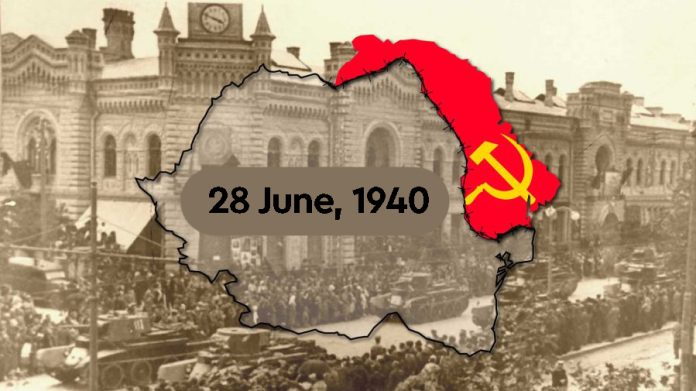Following the Ribbentrop-Molotov Pact of 23 August 1939, by which Nazi Germany and the Soviet Union had divided their spheres of territorial influence in Eastern Europe – after which, also in 1939, World War II began, by attacking Of Poland by Hitler’s Germany, on September 1, 1939, and the Soviet invasion of Poland on September 17, 1939, on June 28, 1940 – Romania received an ultimatum from the Soviet Union, requesting the evacuation of the Romanian civilian administration and army from the territory between the Prut and the Dniester, known as Bessarabia, and in the northern part of the Bukovina region. Subsequently, these territories were abusively occupied by the Soviet Union. Today, June 28, 2022, marks the 82nd anniversary of the Soviet occupation of the above territories.
If the withdrawal of the Romanian civilian administration and armed forces from the territory of Bessarabia and Northern Bukovina was not to be done, Romania was threatened with declaring war. Due to the combined Russian-German pressures, the Romanian administration and army received orders from the deficient and pro-fascist leadership of Romania to withdraw, in order to avoid war and without attempts at negotiations to extend the imposed term, which was obviously impossible to be respected.
In most of the occupied territory, the Soviets proclaimed the Moldavian SSR, and the southern part of Bessarabia, Bugeac, and northern Bukovina were annexed to the Ukrainian SSR. With the proclamation of the Moldovan SSR, the Moldovan RSSA, an autonomous “Moldovan” republic east of the Dniester, was divided between the two neighboring Soviet republics, Soviet Moldova and Ukraine. The Soviet occupation was briefly interrupted in 1941, after Romania and Germany launched military operations to liberate the USSR-occupied territories as part of Operation Barbarossa, but the territories were eventually reoccupied by the Soviets in 1944.
Follow us on Facebook for the latest news!
After Stalin’s death in 1953, and especially after 1956, the persecution of ethnic Romanians in Bessarabia and northern Bukovina gradually declined. The first free elections in the Moldovan SSR took place in the general climate of perestroika, in February 1990, and Soviet control over this region ceased in August 1991, after the attempted coup in Moscow and the dissolution of the Soviet Union. In 1991, the Moldovan SSR became the new independent state of the Republic of Moldova, while Northern Bukovina and Bugeac remained part of Ukraine.



